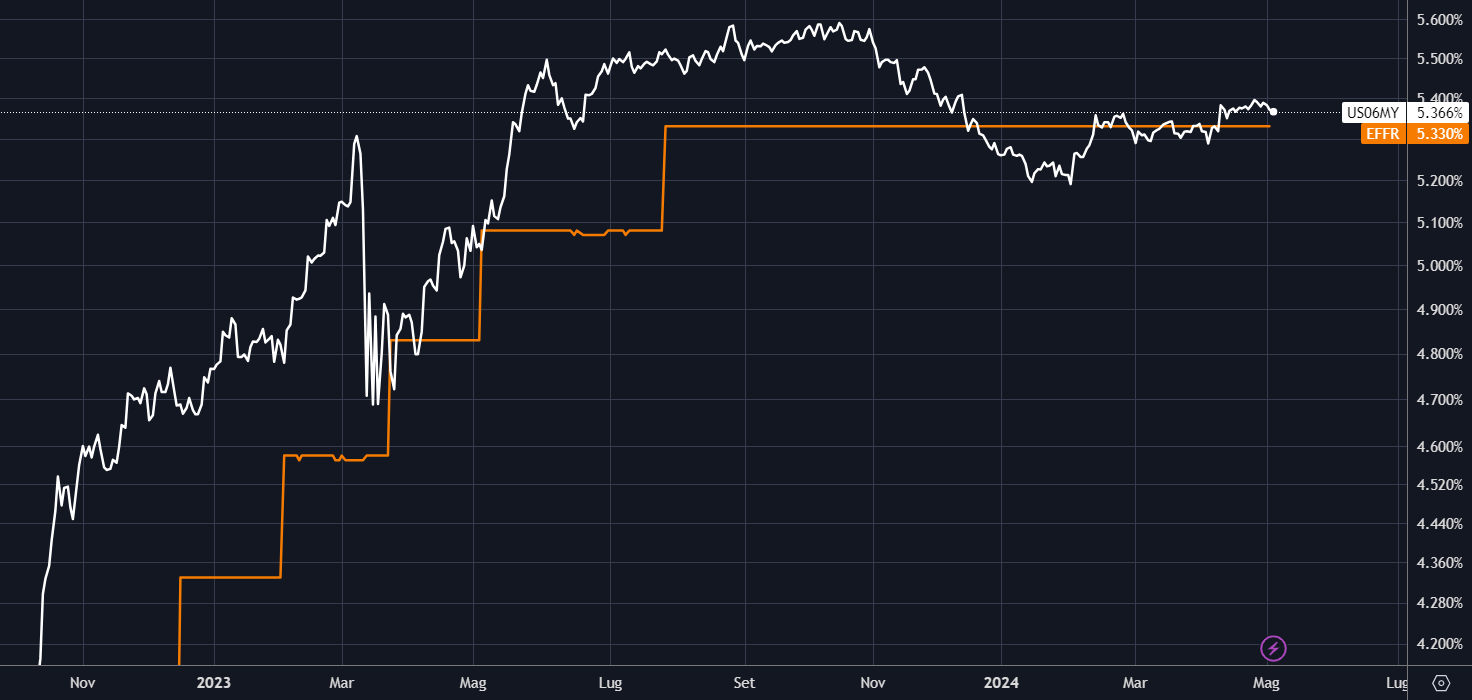Rate Cuts Could Be Coming Much Sooner Than You Expect
- After April’s decline, the Fed’s dovish stance has markets betting on a rate cut in 2024.
- While a December cut seems most likely, a weaker labor market and declining inflation could push it sooner.
- Meanwhile, a potential dollar and oil price decline could further support the tech sector’s comeback.
- For INR 216 a month access our AI-powered ProPicks stock selection tool. Learn more here>>
- TVR INSTITUTE
After a rough April that saw the S&P 500 record its worst monthly decline since September 2023 and the Nasdaq break its 5-month positive streak with a drop exceeding 4%, markets are now pricing in a 42% chance that the Fed will hold off on rate cuts in 2024.
However, the first week of May ended on a positive note for most stocks, fueled by a weaker-than-expected jobs report and comments from Fed Chair Powell suggesting that it is unlikely that the next move could be a rate hike.
So, When Can You Expect the Fed to Cut Rates?
The bond market appears to be anticipating a cut in 6 months. Typically, if the market expects rate cuts within that timeframe, the yield on 6-month Treasury bonds would be at least 0.25% lower than the current Fed Funds rate. Since this isn’t the case, it suggests the December FOMC meeting as the earliest possibility for a rate cut.
Currently, the expectation is for a single 0.25% rate cut in December 2024. This aligns with Investing.com’s indicator on Fed rate expectations, which shows a higher probability of a cut in December compared to earlier months. In addition, the Fed is increasingly focusing on price stability and maximum employment.
In this context, we can see how the continued decline in nonfarm jobs, which fell to the lowest level since February 2021 reaching 8.488 million, has a clear correlation with inflation dynamics, specifically with year-over-year Core PCE inflation.

The recent rise in the unemployment rate to 3.9% and the decline in wage growth to 3.9% year/year indicate a weakening labor market and slowing aggregate income growth expectations.
This suggests that inflationary pressures are likely to ease in the coming months.
Furthermore, if the U.S. dollar weakens in tandem with the decline in oil prices and breaks its current trend line, the situation becomes even more interesting.
The technology sector (NYSE:XLK) is finding support against energy (NYSE:XLE) at a previous resistance level. This indicates a shift in supply and demand, with buying pressure outweighing selling pressure. This pause in the decline suggests a potential reversal and a possible return to an upward trend for the technology sector.
***

